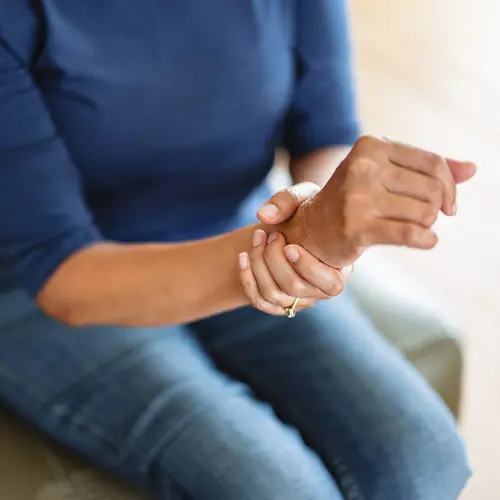Regenokine is a type of regenerative medicine that uses your own blood to treat your joint pain. It’s also known as autologous conditioned serum or Orthokine.
Regenerative Medicine
Your body can heal itself in many ways. Your skin will repair itself if you cut yourself. A protective blood clot forms shortly after you break a bone. New bone cells then start to form.
The field of regenerative medicine tries to use your body’s natural ability to heal. There are two main types of regenerative medicine:
- Tissue engineering, which involves the creation of biomaterials to improve or restore tissues or organs
- Self-healing, which makes use of your body’s natural ability to heal itself
What Is Regenokine?
Regenokine was in the news because of professional athletes seeking out the treatment. Scientific research has mostly focused on its effects on osteoarthritis.
Regenokine was developed by the German company Orthogen AG. This serum is made from your blood. It’s treated in such a way that it produces an anti-inflammatory protein called IL-1 receptor antagonist (IL-1Ra). This protein may change your body’s inflammatory response and improve any damage to your cartilage.
What Is Osteoarthritis?
Osteoarthritis is the most common joint disorder. The number of adults in the US with osteoarthritis is expected to almost double from 21.4 million in 2005 to 41.1 million by 2030.
Osteoarthritis occurs when the cushion between your bones (cartilage) wears down.
Your cartilage is a tough flexible tissue that allows your joints to move with barely any friction. But your bones will start to rub together as your cartilage wears down. Your joints then get painful and swollen.
Symptoms of osteoarthritis include:
- Swelling
- Pain
- Tenderness
- Stiffness, especially after waking up or inactivity
- Loss of flexibility or range of motion
- Bone spurs may form around your joint. These are extra bits of bone.
- Grating sensation when you move the joint. You might also hear cracking or popping sounds.
You’re at higher risk for getting osteoarthritis if you:
- Are older.
- Are female.
- Have previous joint injuries.
- Are obese.
- Do repetitive actions like heavy lifting or kneeling.
- Play professional sports such as football, hockey, and long-distance running.
- Have relatives with the condition.
- Have certain metabolic diseases like diabetes or hemochromatosis.
- Have bone deformities.
Treatments for Osteoarthritis
Typical treatment for osteoarthritis is aimed at relieving your symptoms and pain.
Medications. Drug treatments for osteoarthritis have been limited to painkillers, non-steroidal anti-inflammatory drugs ( NSAIDs), and injections of steroids or hyaluronic acid.
But these treatments also have some adverse side effects. Taking too many painkillers can cause liver damage. NSAIDs can lead to bleeding problems, stomach upset, liver or kidney damage, and cardiovascular problems Steroid injections must be limited to three or four a year. They can make joint damage worse over time.
Surgery. Your doctor may recommend joint replacement surgery if you have advanced osteoarthritis. Artificial joints can come loose or wear out. They may eventually need to be replaced.
These treatments can help with pain and improve function. But they don’t prevent the natural progression of osteoarthritis. Nor will they reverse the existing damage in your joints.
These limited treatment options and the effect that osteoarthritis has on your quality of life may spark your interest in complementary and alternative therapies.
Regenokine Treatment
Keep in mind that Regenokine can be expensive. It may be as high as $10,000 a session.
Procedure. A healthcare professional will draw your blood using a special syringe with treated medical-grade glass beads inside to prepare the Regenokine serum. The glass beads kickstart your body’s production of anti-inflammatory cytokines.
The blood is heated to your body temperature (98.6 degrees Fahrenheit) then spun in a centrifuge to separate it into different layers. The serum is filtered out and then stored in the freezer until it is used. The Regenokine serum is injected directly into your affected joint.
In some trials, the serum was injected twice a week for 3 weeks.
Effectiveness of Regenokine
Several different studies have found that Orthokine and Regenokine have been effective in reducing pain.
A 2009 study looked at 376 people with osteoarthritis. Those who were given Orthokine improved significantly compared to those who were given hyaluronic acid or saline. Their pain was reduced and participants said their knees’ mobility and function increased.
Their osteoarthritis symptoms were still significantly better 2 years later. Researchers also noted that those who received saline and hyaluronic acid injections continued to have some improvements as well.
A study in 2020 compared Regenokine and other autologous conditioned serums to another osteoarthritis treatment called platelet-rich plasma. Researchers found that the serums were more effective in relieving pain than platelet-rich plasma therapy in 123 people with knee osteoarthritis.
Those who had Regenokine or a similar serum continued to report less pain after 3 months. But platelet-rich plasma had little to no effect after the same period.

